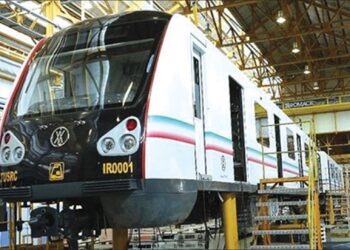December 12, 2014

Chain stores exist in Iran, but they haven’t yet become the dominant force that they are in most countries.
Shopping in Iran remains a very local affair. Local markets, or baqalis, continue to play the key role in retailing. Ma and pa markets started dying in the United States right after World War II and in Europe soon thereafter.
In the United States, little more than restaurants remain in the hands of independent entrepreneurs.
But in Iran, ma and pa remain the queen and king of retailing even with the introduction of large superstores like the joint French-Emirati Hyperstar shops, selling everything from food to electronics, or the Iranian-owned Shahrvand and Refah supermarkets found in many of Iran’s larger cities.
The street corner bakery selling bread directly out of the oven and into the shopper’s hands (literally) is one local retail experience that has generally been lost in Tehran and replaced by the products of giant centralized bakeries. But that is the exception, not the rule.
The continuation of the traditional shopping experience is partly due to government support. Since the 1979 revolution, the older method of shopping has persisted due to the owners of these smaller stores resisting any encroachment by larger retailers and winning the backing of many in the revolutionary elite who oppose change.
A Euromonitor report completed just last year said:
“Non-grocery retailers remain highly fragmented, characterized by single-outlet operations…. The concept of chain stores for non-grocery retailers was unknown in Iran at the end of the review period.”
The typical floor space continues to be around 10 square meters (108 square feet or a space measuring about 10 by 11 feet), with many of the stores resisting expansion, even some splitting their stores in half in an attempt to pack in more items of a specific type, say cleaning products on one side, and food products on the other.
Although this sounds like a counterintuitive operation in terms of attracting customers, these stores continue to buck the foreign trend and continue to make profits, though not exceptional profits.
Tehran’s English language Financial Tribune recently looked at retailing and asked why chain stores have failed to break into the Iranian market.
The Tribune concluded, “That would be due to the underdevelopment of the market as a whole. In Iran’s capital city, Tehran, large superstores are still outnumbered by their small local counterparts. There is no exact number but due to factors of land price costing hundreds of millions of dollars and the comparative ease of setting up a sole proprietor business, large stores remain at the initial level of their development.”
The newspaper said economic and political forces do not completely explain the trend, however. Clearly, there’s a consumer preference. But is that rational?
The Tribune said the London mayor’s office studied retailing there in 2011. It found that food in ma and pa shops cost nearly two-thirds more than in the chain supermarkets. ”The same may be true for Iranian local stores, as they cannot offer the kinds of discounts of the larger supermarkets and ultimately have to keep the prices the manufacturers print on the goods,” the Tribune concluded.

















